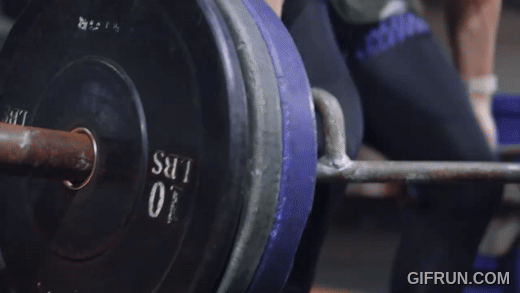OTA Performance Standards: Unlocking Athletic Potential through Key Metrics
In the world of performance training, one of the most common questions coaches and athletes ask is, “What standards should athletes meet to optimize performance?” As a coach who has worked with a variety of athletes at different levels, I’ve developed a set of key performance standards that help provide clarity in how to assess an athlete’s progress and potential. These standards aren’t one-size-fits-all but offer a starting point for developing a comprehensive training program based on an athlete’s unique abilities.
In this blog post, we’ll explore the key performance standards I focus on when evaluating athletes. These include strength, power, and speed metrics that can give us insight into an athlete’s current level and where they need improvement. Specifically, we’ll dive into the importance of the trap bar deadlift, the vertical jump, and the Reactive Strength Index (RSI). Together, these metrics form the foundation for developing an athlete’s potential and guiding their training journey.
The Importance of Strength, Power, and Speed in Athlete Development
When it comes to training athletes, three factors play a pivotal role in unlocking performance: strength, power, and speed. These elements are deeply interconnected and crucial for athletic success in virtually every sport.
-
Strength is the foundation of all physical capabilities. It is the ability to exert force against resistance, and it directly affects an athlete’s power and speed. Without sufficient strength, athletes struggle to develop the necessary force to perform explosive movements or sustain speed over time.
-
Power is the ability to exert maximum force in a short amount of time. It’s the combination of strength and speed. Whether sprinting down the field or jumping to make a play, power is what drives athletes to excel in dynamic movements.
-
Speed is the athlete’s ability to accelerate and reach top velocity. Speed is influenced by both strength and power. An athlete with strong legs and explosive power can accelerate quickly, maintain top speed, and change direction effectively.
By identifying benchmarks for these three key areas, coaches can better understand what’s working and what needs more attention in an athlete’s training regimen.
The Trap Bar Deadlift: A Measure of Absolute Strength
When assessing an athlete’s absolute strength, one of the first metrics I look at is the trap bar deadlift. This exercise is a powerful measure of an athlete’s capacity to generate force, and it serves as a foundation for all other power and speed movements. The trap bar deadlift is particularly useful because it allows athletes to lift heavier loads with a more natural movement pattern than the traditional barbell deadlift, making it easier for athletes of various skill levels to perform.
Why is strength so critical? To display any power, speed, or explosive movement—whether that’s sprinting, jumping, or changing direction—athletes need an adequate baseline level of strength. If an athlete doesn’t possess enough strength, they simply won’t be able to display their maximum speed or power.
In terms of performance standards, I typically look for athletes to be able to lift between 2.2 to 2.6 times their body weight in the trap bar deadlift. This range indicates that an athlete has a sufficient level of strength to develop power and speed. Of course, some athletes may need to go beyond this to continue progressing, but achieving this range sets a solid baseline.

Vertical Jump: The King of Athletic Performance
Next up is the vertical jump—often regarded as the “king” of all athletic performance metrics. Why? The vertical jump is a comprehensive measure of an athlete’s lower body power and explosiveness. It combines strength, power, and speed, and it’s highly transferable across all sports. Whether an athlete is trying to reach a higher jump in basketball or increase their leaping ability in volleyball, the vertical jump has a direct impact on their performance.
I spend a significant amount of time developing the vertical jump because it’s one of the most reliable ways to measure an athlete’s ability to generate explosive power. It’s also one of the most universal metrics for athletes in nearly every sport. Improving vertical jump translates directly into a better ability to accelerate, change directions, and perform in game situations.
For athletes, a higher vertical jump signifies a greater capacity to produce force and power. This can lead to improved agility, speed, and overall athleticism. By focusing on jump mechanics, training strength and power, and refining technique, we can help athletes consistently improve their performance in this area.

Reactive Strength Index (RSI): The Power of Tendon Stiffness and Elastic Strength
When evaluating power and speed, another crucial metric is Reactive Strength Index (RSI). RSI measures an athlete’s elastic strength, which refers to how well their tendons can store and release energy during dynamic movements. Essentially, RSI tells us how quickly an athlete can absorb and re-apply force during movements like jumping, sprinting, or changing direction.
RSI is measured by calculating an athlete’s ground contact time and the height of their jump. A lower ground contact time coupled with a high jump height indicates that the athlete’s tendons are stiff and capable of producing force rapidly—key components for speed and agility. This is especially important for sports that require quick, explosive movements like soccer, basketball, or track and field.
An athlete’s RSI offers invaluable insight into their potential for rapid acceleration, direction change, and overall agility. Athletes who perform well in RSI often excel in short sprints, cutting maneuvers, and lateral movements. On the other hand, an athlete with a low RSI might have a good vertical jump but struggle to maintain speed or change directions quickly during play.

The Top Three Metrics: Trap Bar Deadlift, Vertical Jump, and RSI
In summary, the three key performance metrics that I prioritize for evaluating an athlete’s overall performance are the trap bar deadlift, vertical jump, and RSI. By assessing these metrics, I can get a clear picture of an athlete’s strengths, weaknesses, and areas for improvement. Together, they form the foundation for an athlete’s development, highlighting where they excel and where they need focused training to reach their full potential.
- Trap Bar Deadlift assesses absolute strength and lays the groundwork for power and speed development.
- Vertical Jump measures lower body power, explosiveness, and overall athletic ability.
- RSI evaluates an athlete’s ability to generate rapid force and recover, which affects speed and agility.
Together, these metrics not only provide a snapshot of an athlete’s current capabilities but also guide coaches in designing targeted programs that improve an athlete’s performance across all areas.
Conclusion
Developing athletic potential requires more than just focusing on one isolated area of performance. By understanding and tracking key performance metrics like the trap bar deadlift, vertical jump, and RSI, athletes and coaches can work together to elevate performance, improve specific skills, and unlock the athlete’s true potential. These standards form the bedrock of any effective training program and provide a comprehensive framework for evaluating and enhancing performance across various sports.
If you’re an athlete looking to improve your performance, or a coach seeking to implement effective standards, these metrics offer the roadmap for building strength, power, and speed—the three pillars of athletic success!

